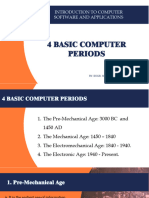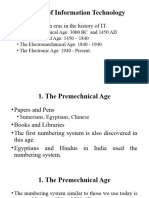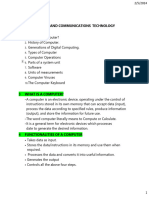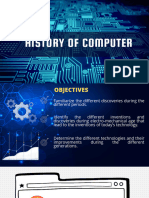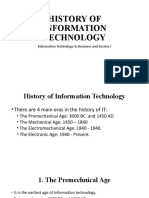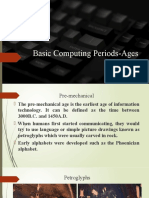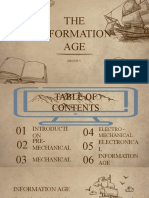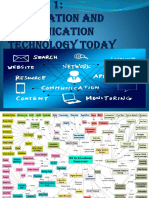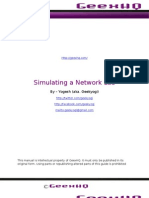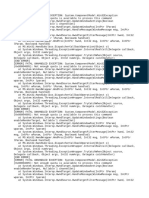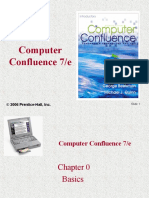0% found this document useful (0 votes)
40 views17 pagesWeb Programming and Development: NJ Linganay
The document summarizes the history of information technology in 4 ages: premechanical, mechanical, electromechanical, and electronic. In the premechanical age, early forms of communication developed like alphabets, paper, books, and early numbering systems. The mechanical age saw inventions like the slide rule, early mechanical computers, and the difference engine. The electromechanical age brought technologies like the telegraph, telephone, radio, and early digital computers like the Mark 1. The current electronic age began with computers like the ENIAC and has progressed to personal computers, CPUs, GUIs, and the technology we use today.
Uploaded by
NJ LinCopyright
© © All Rights Reserved
We take content rights seriously. If you suspect this is your content, claim it here.
Available Formats
Download as PPTX, PDF, TXT or read online on Scribd
0% found this document useful (0 votes)
40 views17 pagesWeb Programming and Development: NJ Linganay
The document summarizes the history of information technology in 4 ages: premechanical, mechanical, electromechanical, and electronic. In the premechanical age, early forms of communication developed like alphabets, paper, books, and early numbering systems. The mechanical age saw inventions like the slide rule, early mechanical computers, and the difference engine. The electromechanical age brought technologies like the telegraph, telephone, radio, and early digital computers like the Mark 1. The current electronic age began with computers like the ENIAC and has progressed to personal computers, CPUs, GUIs, and the technology we use today.
Uploaded by
NJ LinCopyright
© © All Rights Reserved
We take content rights seriously. If you suspect this is your content, claim it here.
Available Formats
Download as PPTX, PDF, TXT or read online on Scribd
/ 17















